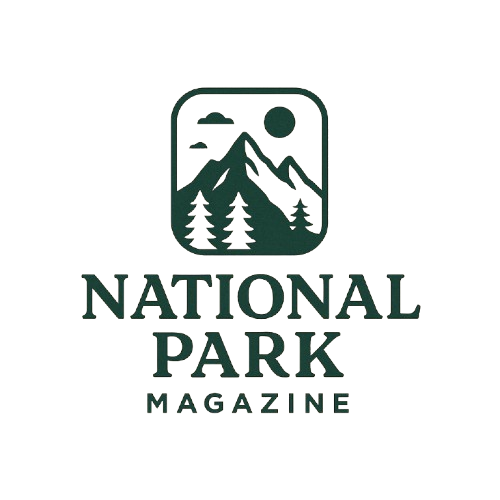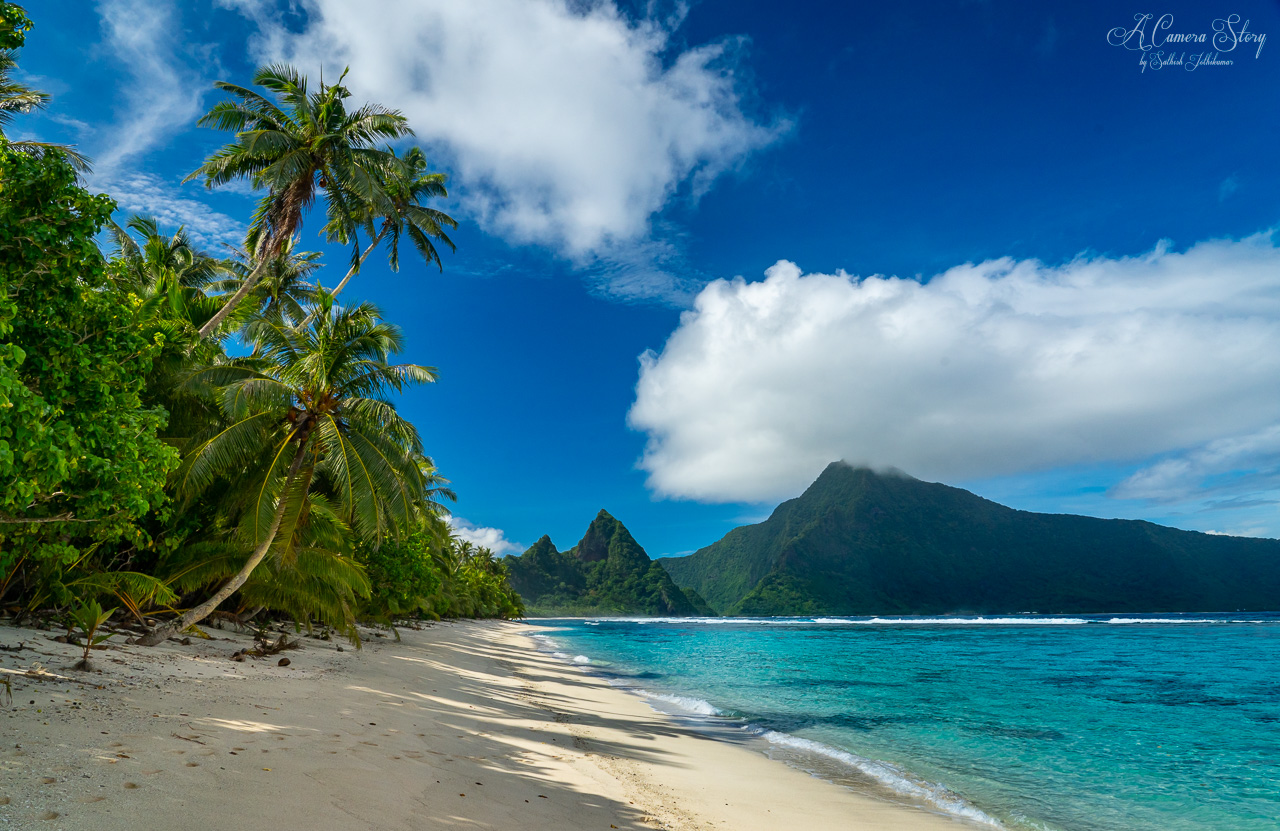Get more National Park of American Samoa Travel Tips & News here!
Where is National Park of American Samoa located?
The National Park of American Samoa is located in the South Pacific Ocean, encompassing parts of the islands of Tutuila, Ta‘ū, and Ofu. The main town in the vicinity is Pago Pago, situated on the island of Tutuila, which serves as the capital of American Samoa. Pago Pago is known for its stunning natural harbor, surrounded by lush mountains and offering a glimpse into the local way of life. The region is recognized for its rich Polynesian culture, friendly locals, and vibrant traditions, making it an ideal gateway for visitors looking to explore the national park.
Best Time to Visit National Park of American Samoa
The best time to visit the National Park of American Samoa is during the dry season, which typically runs from May to October. During this period, the weather is more pleasant, with less humidity and minimal rainfall, making it ideal for outdoor activities such as hiking and snorkeling. The wet season, from November to April, can bring heavy rains and tropical storms, which may lead to park closures and limited access to certain trails and attractions.
Additionally, visitors should consider local festivals and events. The Samoan Flag Day, celebrated on April 17, is a vibrant event that showcases traditional music, dance, and food, providing an excellent opportunity to experience the local culture. However, this time can also attract larger crowds, so planning ahead is essential for a more relaxed visit.
How to get to National Park of American Samoa?
Traveling to the National Park of American Samoa typically involves flying into Pago Pago International Airport (PPG), the main airport serving the region. This airport is primarily served by Hawaiian Airlines and Samoa Airways, with flights connecting from major airports in the U.S. mainland, such as Honolulu, Los Angeles, and San Francisco. From Pago Pago, visitors can easily access the park via rental cars or guided tours that provide transportation to various park locations.
For those seeking a more adventurous route, charter planes may also be available for inter-island travel, allowing visitors to explore Ta‘ū and Ofu easily. However, it is essential to check schedules and availability in advance, as services may vary.
What to do when you arrive:
Upon arrival, visitors to the National Park of American Samoa should first stop by the Visitor Center located in Pago Pago. The center offers valuable information about the park’s attractions, trails, and safety guidelines. Knowledgeable staff can assist in planning your visit and provide insight into the local culture and history.
Accommodations in the area range from hotels to guesthouses, catering to various budgets. Some notable options include the Tradewinds Hotel and the Sadie Thompson Inn, both of which offer comfortable lodging and easy access to the park. Additionally, local restaurants serve delicious Samoan cuisine, allowing visitors to immerse themselves in the local flavors.
Getting Around Locally
Getting around the National Park of American Samoa can be done primarily by rental car, as public transportation options are limited. Renting a car allows for flexibility in exploring the park’s various attractions and scenic viewpoints. Alternatively, guided tours are available and offer a more comprehensive experience, including knowledgeable guides who can provide insights into the park’s natural and cultural significance. Biking and hiking are also popular ways to explore specific areas of the park, especially on designated trails.
Top Things to Do and See at National Park of American Samoa:
- Mount Alava Trail: This challenging hike rewards adventurers with panoramic views of Pago Pago Harbor and the surrounding islands. The trail ascends through lush rainforest, showcasing the park’s diverse flora and fauna.
- Ofu Beach: Renowned for its stunning white sand and crystal-clear waters, Ofu Beach is perfect for swimming, snorkeling, and relaxing in the sun. The nearby coral reefs provide a vibrant underwater world, making it a must-visit for marine enthusiasts.
- Fagatele Bay: This marine protected area is known for its incredible snorkeling opportunities. Visitors can explore colorful coral reefs and diverse marine life, including tropical fish and sea turtles, in this pristine bay.
- Ta‘ū Island: A short boat ride from Tutuila, Ta‘ū Island features breathtaking landscapes and cultural sites, including ancient stone structures and traditional Samoan villages. The island’s natural beauty is complemented by its rich history and cultural significance.
- Visitor Center Programs: The National Park Visitor Center offers various educational programs and ranger-led activities. These programs provide insights into the park’s ecosystems, cultural history, and conservation efforts, making them an enriching part of your visit.
Suggested Itineraries
For a fulfilling experience, consider the following suggested itineraries:
- Day 1: Arrive in Pago Pago, visit the Visitor Center, and take a leisurely hike on the Mount Alava Trail. Enjoy dinner at a local restaurant.
- Day 2: Spend the day exploring Ofu Beach and snorkeling in the nearby coral reefs. Return to Pago Pago for a cultural evening, perhaps attending a local performance.
- Day 3: Take a boat trip to Ta‘ū Island and explore its natural and cultural sites. Enjoy a picnic lunch on the beach before returning to Tutuila.
- Day 4: Visit Fagatele Bay for snorkeling and relaxation. Conclude your trip with a visit to the local markets for souvenirs and local treats.
Permits & Fees
Visiting the National Park of American Samoa does not require an entrance fee; however, certain activities, such as guided tours and special programs, may involve additional costs. It is advisable to check the park’s official website for the most up-to-date information on permits and fees related to specific activities. Camping within the park may also require a permit, and visitors should plan accordingly if they wish to experience this option.
Nearby Day Trips & Detours
While the National Park of American Samoa offers plenty to explore, there are also nearby attractions worth visiting. Consider these day trips:
- National Marine Sanctuary of American Samoa: Just a short distance from the park, this sanctuary provides additional opportunities for snorkeling and diving, with a focus on marine conservation.
- Pago Pago Harbor: Explore the stunning harbor and its surrounding areas, including the scenic drive around the coast. Stop by local shops and markets to experience the community’s vibrant atmosphere.
- Samoan Cultural Experiences: Engage with local communities to learn about traditional Samoan customs, crafts, and cuisine. Various cultural experiences can be arranged through local guides or community organizations.
Local Culture & History
The culture of American Samoa is deeply rooted in Polynesian traditions, with a strong emphasis on family, community, and respect for nature. The local population maintains a rich heritage, preserved through traditional music, dance, and crafts. The Samoan language, along with English, is widely spoken, reflecting the island’s history of colonization and cultural exchange.
Visitors to the National Park of American Samoa can immerse themselves in this vibrant culture by participating in traditional ceremonies, enjoying local cuisine, and interacting with the friendly residents. The park’s cultural significance is evident in its preservation efforts, ensuring that the unique stories and traditions of the Samoan people continue to thrive for generations to come.
Packing List & What to Bring to National Park of American Samoa
Planning a trip to the National Park of American Samoa requires careful consideration of what to pack. Given the park’s tropical climate and diverse activities, here’s a comprehensive packing list to ensure you have everything you need for an enjoyable visit:
- Clothing:
- Daypack for hiking and exploring
- Reusable water bottle to stay hydrated
- Snorkeling gear (if not renting on-site)
- Binoculars for wildlife watching
- Camera or smartphone for capturing memories
- Sunscreen (reef-safe preferred)
- Wide-brimmed hat to protect against the sun
- Sunglasses with UV protection
- Insect repellent to ward off mosquitoes
- Basic first aid kit for minor injuries
- Personal medications and prescriptions
- Travel guide or map of the park
- Portable charger for electronic devices
- Snacks for hiking and beach days
Wildlife & Nature Highlights
The National Park of American Samoa is home to a rich array of wildlife and breathtaking natural features. Here are some highlights that you won’t want to miss:
- Marine Life:
- Colorful coral reefs teeming with tropical fish
- Endangered sea turtles that can often be spotted while snorkeling
- Dolphins and occasionally migrating whales in the surrounding waters
- Bird Watching:
- Unique bird species such as the American Samoa fruit dove and the Pacific golden plover
- Rugged terrain provides nesting sites and habitats for various birds
- Flora:
- Lush rainforests filled with native plants, including the Samoan coconut and breadfruit trees
- Rare and endemic plant species that highlight the park’s biodiversity
- Geological Features:
- Stunning volcanic formations and cliffs overlooking the Pacific Ocean
- Beautiful beaches with white sand and crystal-clear waters
Accessibility Information
The National Park of American Samoa strives to be accessible to all visitors. Here are some key points regarding accessibility:
- Visitor Center:
- Located in Pago Pago, the Visitor Center is wheelchair accessible, providing information and resources for visitors with disabilities.
- Trails:
- While many trails in the park are rugged and may present challenges, some paths are designed for easier access. It’s advisable to check with park staff for recommendations on accessible trails.
- Restroom Facilities:
- Accessible restrooms are available at the Visitor Center and select other locations throughout the park.
- Transportation:
- Rental car services are available, and some local tour companies offer accessible vehicles for guided tours.
National Park of American Samoa FAQs
Here are some frequently asked questions about visiting the National Park of American Samoa:
- Is there an entrance fee for the park?
No, there is no entrance fee to access the National Park of American Samoa, though some activities may incur charges.
- Are pets allowed in the park?
Pets are generally not allowed in the park to protect wildlife and natural resources.
- What should I do if I encounter wildlife?
Maintain a safe distance from all wildlife, and do not feed animals. Respect their habitat and observe them from afar.
- Are there guided tours available?
Yes, various guided tours are offered, providing insights into the park’s natural and cultural history.
- Can I camp in the park?
Camping is allowed in designated areas, but permits are required. Be sure to check availability and regulations in advance.
Additional Resources for National Park of American Samoa
For more information and resources to enhance your visit to the National Park of American Samoa, consider exploring the following links:
- National Park Service – National Park of American Samoa
- American Samoa Government
- Samoa Tourism – Travel Information
- Camping Guidelines & Regulations
- National Weather Service – Weather Alerts
These resources provide up-to-date information on park conditions, safety alerts, and travel tips to ensure a fulfilling and safe experience in this unique and beautiful destination.
Follow us on social media for more!


